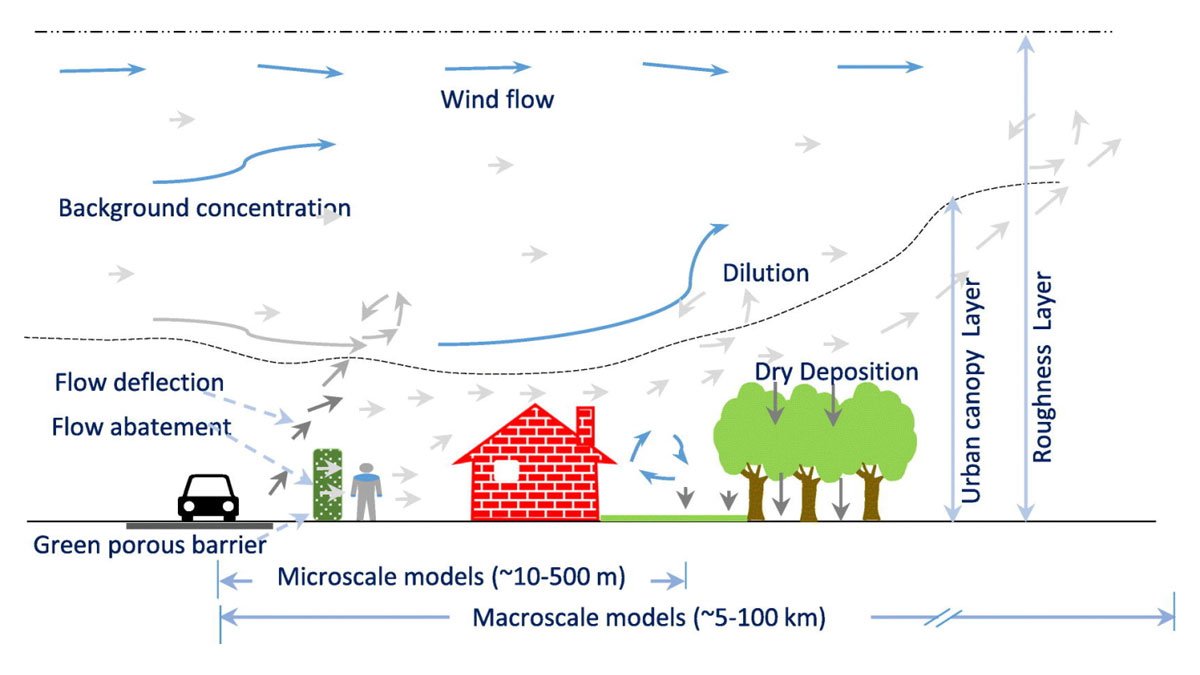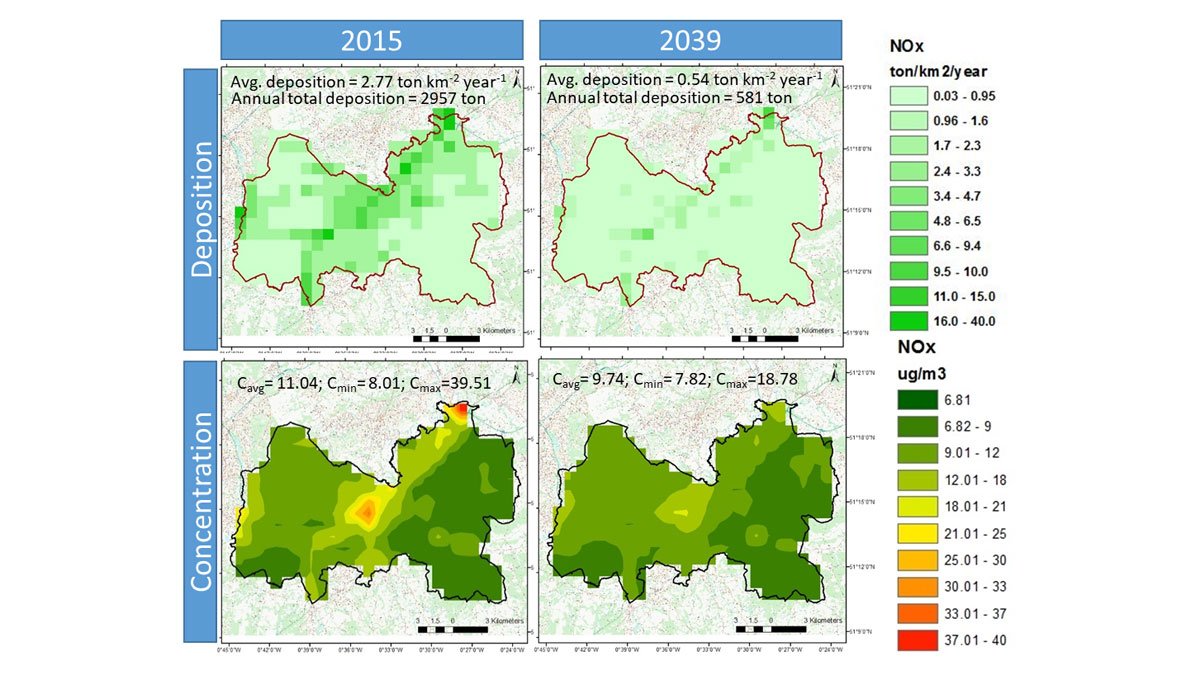New modelling framework estimates the effects of green infrastructure on air pollution across Guildford
Global Centre for Clean Air Research (GCARE) PhD researcher Arvind Tiwari and his supervisor Professor Prashant Kumar have recently published research in a top-ranked journal, Science of The Total Environment.

The study (‘Integrated dispersion-deposition modelling for air pollutant reduction via green infrastructure at an urban scale’) developed a framework to simulate the effects of changes in green infrastructure (GI) cover on air pollution levels.
The usefulness of this novel modelling framework was demonstrated by analysing impacts of GI on pollutant concentrations across Guildford, the home of Guildford Living Lab, under past and future scenarios.
Meetings with Guildford Borough Council, as well as numerous community engagement activities, highlighted the need for such an investigation in order to understand optimum tree planting scenarios at the urban scale. Complementing our recent plant species selection framework, this work evaluated the potential of large-scale GI implementation for controlling the concentrations of different traffic-related air pollutants, including nitrogen oxides (NOx) and particulate matter with an aerodynamic diameter ≤10 μm (PM10) and ≤2.5 μm (PM2.5).
In 2014, the GCARE team published the first study into the potential of roadside vegetation to reduce exposure to traffic-emitted ultrafine particles. This ground-breaking study began a new era of research into GI planning for air pollutant exposure reduction. Since then, more than 20 research articles have been published by Professor Prashant Kumar and his team, including recent work under this theme (e.g. Tiwari et al., 2019; Kumar et al., 2019; Abhijith and Kumar, 2019; Barwise and Kumar, 2020).

Showing the effect of green infrastructure on air pollution exposure reduction at different scales.
The completion and publication of this study marks another ground-breaking stage in the Guildford Living Lab’s activities, with annual average pollutant concentration levels and potential exposure mapped under different GI planning scenarios for Guildford.
The annual average concentrations of air pollutants such as NOx, PM10 and PM2.5, which are associated with many negative health impacts (e.g. an increase in respiratory problems and cardiovascular diseases), were simulated by this new integrated dispersion-deposition modelling framework.
The entire area of Guildford was modelled to simulate the impact of different GI planning scenarios on annual average pollutant concentration levels. These scenarios included:
- Current GI cover (based on 2015 data)
- A business-as-usual scenario projected for the year 2039
- Three alternative future scenarios, with maximum possible coniferous trees, deciduous trees and grassland over the available land
- Another three alternative future scenarios, with targeted coniferous trees, deciduous trees and grassland around traffic lanes.

Showing average, annual and spatial distribution of NOx deposition and hourly averaged, minimum, maximum and spatial modelled NOx concentration levels in the year 2015 to 2039.
In 2015, GI was found to remove 0.028 t ha−1 yr−1 NOx, 0.010 t ha−1 yr−1 PM10 and 0.002 t ha−1 yr−1 PM2.5 from the atmosphere in Guildford. These removals can help to reduce average hourly pollutant concentration levels to 11.04 μg m−3, 10.19 μg m−3 and 7.95 μg m−3 for NOx, PM10 and PM2.5, respectively. The corresponding UK Air Quality Limits for these pollutants are 40 μg m−3, 40 μg m−3 and 25 μg m−3. It is projected that pollutant concentration levels will be decreased by 11.77% in NOx, 1.47% in PM10 and 0.13% in PM2.5 in the year 2039, by which point government had intended to end the sale of new conventional petrol and diesel cars and vans (this was recently brought forward to 2035).
This work is supported by the iSCAPE (Improving Smart Control of Air Pollution in Europe) project, which is funded by the European Community's H2020 Programme (H2020-SC5-04-2015) under the Grant Agreement No. 689954, the EPSRC-funded project INHALE (Health assessment across biological length scales for personal pollution exposure and its mitigation; EP/T003189/1), and the Guildford Living Lab.
Reference
Tiwari, A. and Kumar, P., 2020. Integrated dispersion-deposition modelling for air pollutant reduction via green infrastructure at an urban scale. Science of The Total Environment, 723, p.138078. https://doi.org/10.1016/j.scitotenv.2020.138078. Read more about the iSCAPE Guildford Living Lab work.
